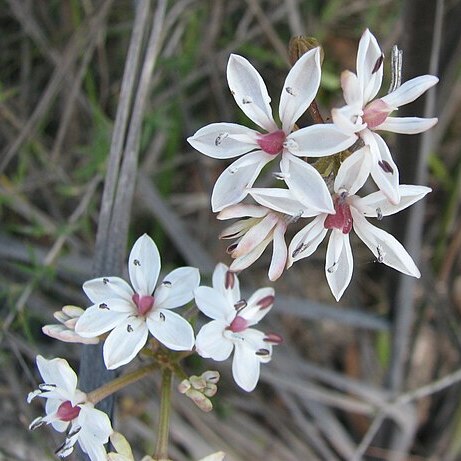A lily which produces white flowers. The plant is 15-50 cm high. It usually has one stem with leaves around it. The leaves are grass-like and hairless. Several of these come from the base then smaller ones are along the stem. The base of the leaves forms a sheath. The roots are fibrous. There are showy clusters of flowers. The flowers have 6 white petals and the ovary in the centre is triangular and pink. The seed pod is wing-shaped and they occur in a group. Under the ground there are a star-like array of 10 cm long thin white tubers.

